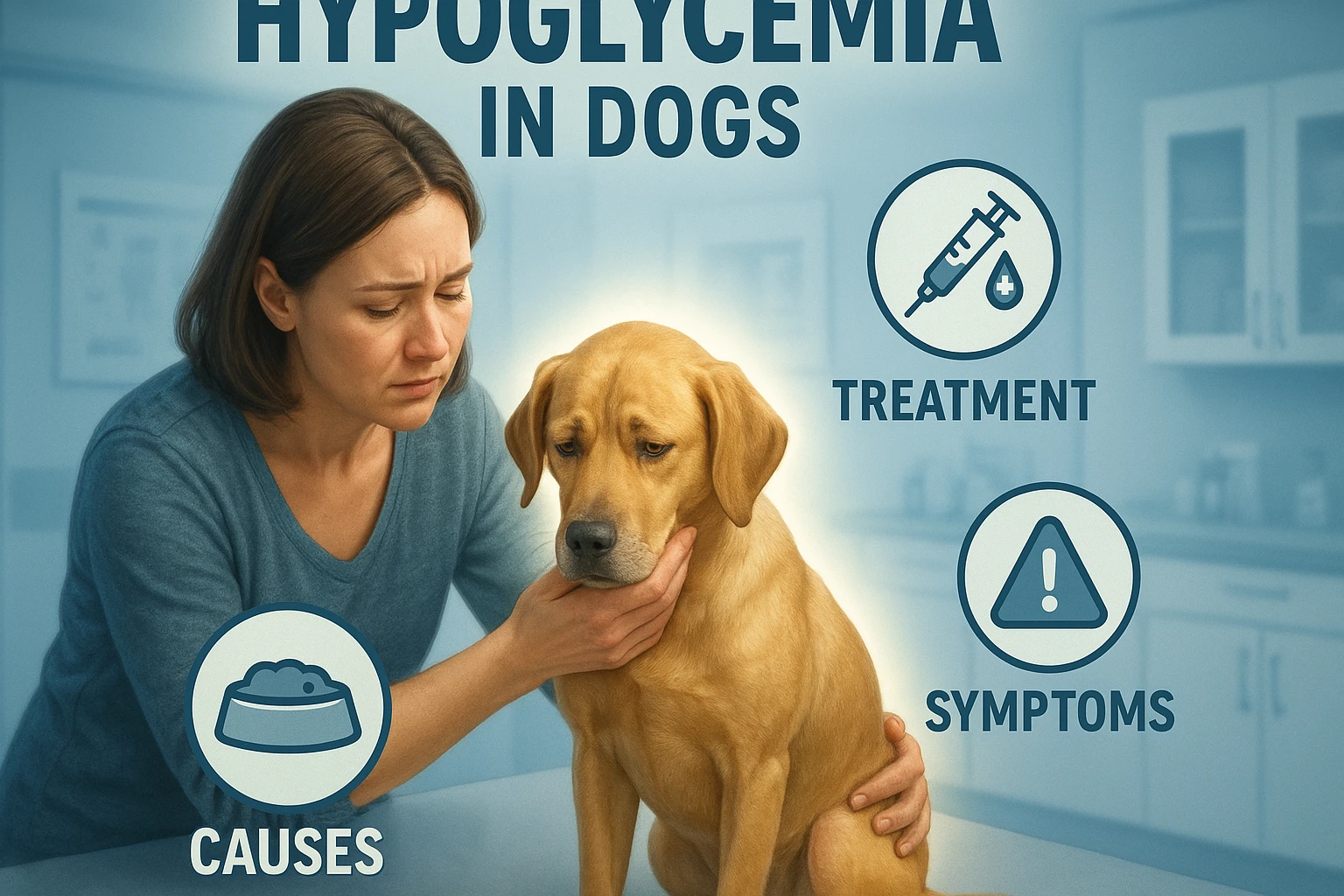Understanding Hypoglycemia in Dogs: Causes, Symptoms, and Treatment
Introduction
Welcome to the revealing world of hypoglycemia in dogs! Imagine this: your furry friend’s little powerhouse cells starving for glucose. Not a pretty sight, right? It’s surprisingly common yet poorly understood. Today, we’ll illuminate the intricacies of this condition, from its root causes to key symptoms and reliable treatment methods. Our goal? To help you become the confident, caring pet owner you aspire to be, safeguarding your pup’s health with informed prowess!
Key Takeaways
- Hypoglycemia affects 9% of dogs in emergencies, often due to sepsis or neoplasia.
- Common in dogs with diabetes, requiring hospital care in 10% of cases.
- Linked with a 44.6% mortality rate in severe cases, proving serious.
- Innovative tools like continuous glucose monitors are emerging.
Table of Contents
Causes of Hypoglycemia in Dogs
Let’s slice through the scientific jargon! Hypoglycemia in dogs can be caused by several factors. Firstly, underlying diseases like sepsis and neoplasia are notable culprits, affecting around 9% of dogs in emergency cases. Secondly, diabetic dogs, about 10%, may experience low blood sugar due to insulin issues. Lastly, external factors such as stress or malnutrition can trigger it.
- Insulin overdose, common in diabetic dogs.
- Disease factors: sepsis, neoplasia.
- Poor dietary energy sources.
Recognizing Symptoms
Ready to wear your detective hat? Here’s how to spot hypoglycemia: symptoms range from simple lethargy to more severe seizures. This condition deprives cells of the glucose they urgently need. According to experts like Dr. David Carabetta, signs are severe as the body struggles without its energy source.
- Lethargy and weakness.
- Twitching or seizures.
- Disorientation or confusion.
Effective Treatments
Let’s put on our chef’s apron, because treatment is all about blending the right ingredients. Addressing the underlying cause is key. Severe cases may require hospital intervention with glucagon or IV dextrose, as evidenced in certain case studies. Utilizing new technologies for real-time monitoring can help manage diabetes better.
- Administering glucose immediately.
- Using glucagon injections for insulin overdoses.
- Hospital monitoring for severe cases.
Prevention and Management
Now, let’s switch gears to prevention. We’re all about playing defense here: good nutrition and regular check-ups are essential. Innovations like continuous glucose monitors are enabling real-time tracking, which can be a game changer according to recent trends. However, costs and accessibility pose challenges.
- Regular glucose level monitoring.
- Balanced diet rich in nutrients.
- Routine veterinary check-ups.
FAQs
-
What causes hypoglycemia in dogs?
Causes include insulin imbalances, diseases like sepsis, and poor nutrition.
-
What are the symptoms of low blood sugar?
Symptoms range from lethargy and weakness to severe cases of seizures and disorientation.
-
How can hypoglycemia be treated?
Treatments can involve immediate glucose administration, glucagon injections, and, in severe cases, hospital monitoring.
Conclusion
In the doggy diet world, hypoglycemia is the unwanted ingredient. But armed with the right knowledge, you can safeguard your pet against it. With our exploration today, you’ve unearthed causes, recognized symptoms, and adapted corrective strategies. By harnessing recent advancements and paying close attention to your dog’s health signals, you can minimize risks. Remember, prevention is a mixture of proactive monitoring and timely intervention. Stay informed, stay compassionate, and let’s safeguard our four-legged friends together!


Leave a Reply